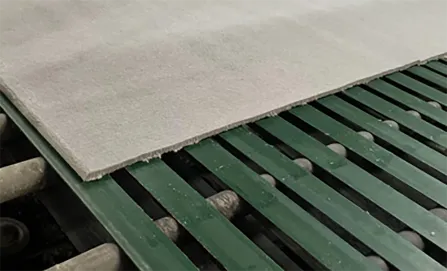Dec . 20, 2024 03:42 Back to list
suspended ceiling main tee
Understanding Suspended Ceiling Main Tees An Overview
Suspended ceilings, often referred to as drop ceilings, are a popular architectural element in modern construction and renovation projects. They serve both aesthetic and functional purposes, providing a clean and polished appearance while concealing structural elements such as ductwork, electrical wiring, and plumbing. A critical component of suspended ceilings is the main tee, which plays a pivotal role in the overall structure and design of the ceiling system. This article aims to shed light on the significance of suspended ceiling main tees, their installation process, and their various types and applications.
What are Main Tees?
Main tees are long, horizontal support channels that form the backbone of a suspended ceiling system. Typically made from metal, vinyl, or other durable materials, these tees are designed to carry the weight of the ceiling tiles and other components. They are installed perpendicular to the ceiling joists, creating a grid structure that facilitates the easy placement of various ceiling tiles and panels.
The main tees run at regular intervals, usually 4 feet apart, and are interconnected by cross tees, forming a grid that ensures stability and support for the ceiling system. The grid layout allows for greater flexibility in design, enabling architects and designers to create visually appealing ceiling patterns while maximizing the space’s usability.
Installation of Main Tees
Installing suspended ceiling main tees requires precision and careful planning. The process typically begins with measuring the room dimensions and determining the appropriate height for the ceiling. Once the desired height is established, a chalk line is used to mark the locations for the main tees, ensuring that they are level and uniformly spaced.
The next step involves suspending the tees from the overhead structure using wire hangers or supports. These hangers are attached to the building’s rafters or beams and are adjustable to accommodate any variations in height. After securing the main tees, cross tees are inserted at right angles to complete the grid system. The final step is placing the ceiling tiles or panels into the grid, covering the underlying structures and providing a finished look.
Types of Main Tees
suspended ceiling main tee

There are various types of main tees available in the market, catering to different design requirements and building codes. The most common types include
1. Narrow Main Tees These are typically 1-inch wide and offer a minimalist look, making them ideal for contemporary spaces. 2. Wide Main Tees With a width of 1.5 inches or more, wide main tees provide a more substantial appearance and can enhance the aesthetic appeal of larger rooms. 3. Heavy-Duty Main Tees Designed for areas that require additional support, these tees are thicker and more robust, suitable for spaces with heavy ceiling tiles or additional equipment.
4. Acoustic Main Tees These are engineered to enhance sound absorption, making them perfect for offices, schools, and auditoriums where noise control is essential.
Applications of Suspended Ceiling Main Tees
The versatility of suspended ceiling main tees makes them suitable for a wide range of applications. In commercial spaces, they can be found in offices, retail stores, and hospitals, providing a clean and organized look while allowing easy access to mechanical systems. In residential settings, suspended ceilings can enhance dining rooms, basements, and family rooms, combining decor with functionality.
Moreover, the design flexibility offered by main tees allows for unique styles and patterns, enabling designers to create customized ceiling solutions that align with the overall aesthetic of the space.
Conclusion
In summary, suspended ceiling main tees are a fundamental aspect of modern ceiling systems, providing essential structural support while offering design flexibility. Understanding their role and installation process is crucial for anyone looking to undertake ceiling renovations or installations. Whether in a commercial environment or a residential setting, main tees not only enhance the functionality of a space but also contribute to its visual appeal, making them an important consideration in any building project.
-
Quality Ceiling Trap Doors & Access Panels | Easy & Secure AccessNewsAug.30,2025
-
Durable Ceiling T Grid Systems | Easy InstallationNewsAug.29,2025
-
PVC Gypsum Ceiling: Durable, Laminated Tiles for Modern SpacesNewsAug.28,2025
-
Pvc Gypsum Ceiling Is DurableNewsAug.21,2025
-
Mineral Fiber Board Is DurableNewsAug.21,2025
-
Ceiling Tile Clip Reusable DesignNewsAug.21,2025







